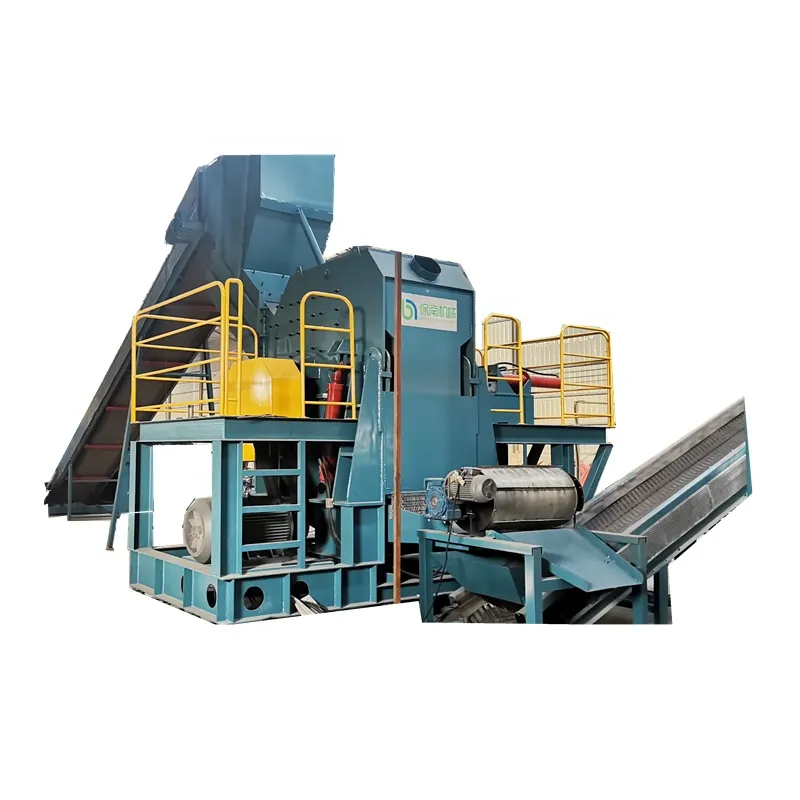

Ira . 01, 2024 16:00 Back to list
The Importance of Steel Scrap Processing Plants
In today's world, where sustainability and resource efficiency are paramount, steel scrap processing plants play a crucial role in the steel production industry. These facilities are specialized in recycling and processing metal scrap, primarily steel, which is one of the most recycled materials globally. Steel scrap processing not only conserves natural resources but also significantly reduces energy consumption, greenhouse gas emissions, and waste generation.
The Recycling Process
The steel recycling process begins with the collection of scrap metal from various sources, including construction sites, manufacturing facilities, and discarded consumer products
. Once collected, the scrap is transported to processing plants, where it undergoes several stages before being ready for reuse.Initially, the scrap is sorted into different categories based on the type and grade of steel. This sorting can involve both manual labor and advanced technology, such as magnetic separators and shredders, to ensure that impurities and non-ferrous metals are removed. Following sorting, the steel scrap is shredded into smaller pieces, allowing for easier handling and better melting efficiency.
The next step in the recycling process is melting. The shredded scrap is loaded into an electric arc furnace (EAF) or a basic oxygen furnace (BOF), where it is heated to high temperatures until it transforms into molten steel. EAFs are particularly popular in scrap processing plants, as they consume less energy compared to traditional blast furnaces and are capable of producing high-quality steel from scrap.
Once melted, the molten steel can be alloyed with other metals to achieve specific properties required for various applications. After alloying, the steel is poured into molds to solidify, forming new products that can be used in construction, automotive manufacturing, and countless other industries.

Environmental Benefits
Steel scrap processing plants are essential for reducing the environmental impact of steel production. By recycling steel scrap, these plants significantly lower the need for virgin iron ore mining and extraction, which can lead to habitat destruction and pollution. The recycling process also requires much less energy—up to 75% less compared to making steel from virgin materials—resulting in a lower carbon footprint.
Moreover, process emissions are considerably lower in scrap-based steel production. The use of electric arc furnaces, which predominantly use electricity rather than coal, contributes to a more sustainable and eco-friendly production process. This shift to recycling and renewable energy can help to mitigate climate change and promote a circular economy.
Economic Advantages
Beyond environmental benefits, steel scrap processing plants also provide vital economic advantages. They contribute to job creation within communities by employing skilled labor for sorting, processing, and administrative tasks. Furthermore, recycling steel scrap transforms waste materials into valuable resources, fueling local economies and reducing the costs associated with waste disposal.
In conclusion, steel scrap processing plants are essential components of a sustainable future. They not only promote environmental stewardship through recycling but also support economic growth and job creation. As industries and governments increasingly focus on sustainability, the importance of efficient and effective steel scrap processing cannot be overstated. Embracing and investing in these facilities will ensure a resilient, resource-efficient future for generations to come.
Latest news
Troubleshooting Common Eddy Separator Problems
NewsJul.04,2025
The Role of Metal Recycling Plants in Circular Economy
NewsJul.04,2025
The Impact of Recycling Line Pickers on Waste Management Costs
NewsJul.04,2025
Safety Features Every Metal Shredder Should Have
NewsJul.04,2025
How Industrial Shredders Improve Waste Management Systems
NewsJul.04,2025
How Cable Granulators Contribute to Sustainable Recycling
NewsJul.04,2025